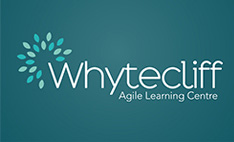Developmental dysgraphia in children is a disorder reflecting difficulty in the acquisition of writing/spelling skills despite good visual sight, normal IQ and normal schooling and education. Research has shown dysgraphia is also closely related to difficulties in acquisition of reading skills or developmental dyslexia. Overall, difficulties in acquisition of reading and writing skills is seen as affecting 7% to 17% of children. Dysgraphia primarily relates to difficulties in processing and sequencing of language, thought and motor skills. More specifically it can relate to challenges in a child’s ability to hear and work with sounds of spoken language, problems in habit formation in procedural learning, challenges integrating linguistic, cognitive, and motor skills, and deficits in visual and spatial attention.
How Whytecliff Can Help Kids With Dysgraphia
Whytecliff offers the BC Ministry of Education accredited curriculum leading to a British Columbia Certificate of Graduation. Whytecliff also incorporates the new BC Curriculum’s intellectual, personal, and social-emotional proficiencies, with a special emphasis on youth development as well as positive mental health and wellness.
Learning specialists recommend a two-pronged approach for helping students with dysgraphia ⎯ reducing challenges and increasing skills. Compensation techniques (reducing challenges) are ways to reduce the negative impact on learning and bypass the problem. Remediation techniques (increasing skills) provide additional structured practice or re-teaching of a particular concept, idea, or skill.
At Whytecliff our self-directed and self-paced learning approach (concentrating on one or two courses at a time) allows children to proceed in concert to their particular skills and challenges they face. With our low student to staff ratio of 5 or 6 to 1, children are able to receive the emotional and practical support they need to be successful. Our warm, caring, and competent staff are attuned to children’s needs and abilities and are able to pick out when a student becomes confused or begins to struggle.
At Whytecliff, we seek to gently build some of the core skills associated with remediating dysgraphia by creating “optimal learning experiences” that are matched to a children’s particular skills, interests, and abilities. For example, a child with dysgraphia may be interested in art; in this case, we would encourage that particular child to complete multiple assignments in other subjects using art as a medium of expression. By engaging a child’s own interests (and using methodologies that they personally find enjoyable and motivating), we are able to bypass certain challenges, while simultaneously building children’s skill sets in a way that’s fun and enjoyable.
In our supportive program environment, no child is embarrassed about their particular challenge (as everyone is also growing through their own emotional and learning challenges and growth and change is the norm). As a member of the Whytecliff community children are also supported by their peers; working in pairs or groups each child is able to use their particular strengths to teach and learn from each other. As a child’s resources build and they develop their confidence and competence, they achieve an increasing ability to grow through their particular challenge.
